It’s strange that I should be inspired to write a review about the Ricoh GXR; a digital camera. I made film my primary medium several years ago. In this time I’ve acquired a slew of beautiful, rare, and interesting film cameras, all worthy of a 35mmc write-up. So why dedicate my time to writing about some obscure digital compact the world already seems to have forgotten? More than any other reason, I have an affinity for unique cameras. The Ricoh GXR is certainly a unique camera, but is it a good camera?
What is It?
The Ricoh GXR is an enthusiast compact camera introduced in late 2009. Unlike any other consumer camera (that I know of), it features an interchangeable sensor. How exactly is a sensor interchangeable? The GXR utilizes interchangeable “units”, each housing a purpose-built ‘lens / sensor / image processor’ combination. These small, dust-sealed units slide in and out of a camera body shell. The camera body itself is nothing more than a user interface with lots of buttons, an LCD screen, and a tiny pop-up flash.
Ricoh offered six modules over the course of the GXR’s lifespan. Two of these are autofocusing prime lens units (28 and 50mm equivalent) that utilize a 12.3 MP CMOS APS-C sensor. These, in my opinion, are the ones to get if you find the focal length agreeable. Three zoom lenses were made available that I won’t bother listing (zooms are terrible, am I right?). Finally, and perhaps most interestingly, a Leica M mount module was also offered.
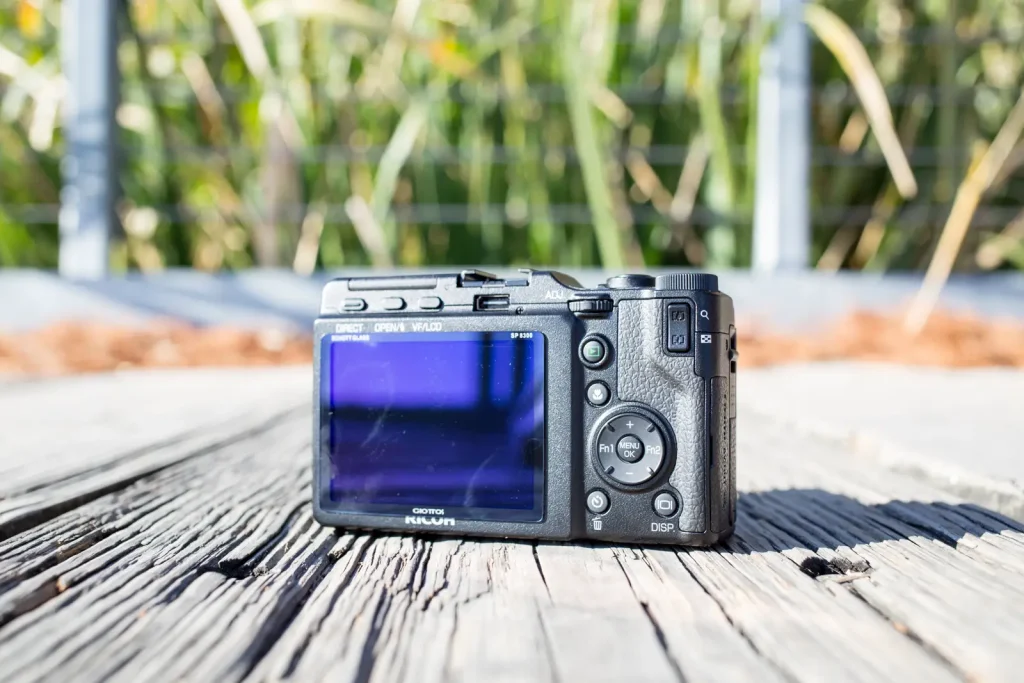
In terms of build quality, each component is manufactured to an exceptionally high standard. There is absolutely no flexing or creaking and the overall fit and finish of the Ricoh GXR is top notch. When a lens module is attached to the body, the combination feels like an incredibly robust singular unit. I was honestly surprised to find a “Made in China” label on each component, expecting something this well made to come from Japan. It’s a testament to the capabilities of modern Chinese manufacturing.
The overall size is not much different than a modern GR. In the hand, it feels about 10% bigger in each dimension. The slightly larger size actually pushes it just outside the truly pocketable category (or perhaps my jeans are too tight). It’s perfectly happy to be stuffed into a jacket pocket. Here it is next to a few various bodies for a comparison in size.
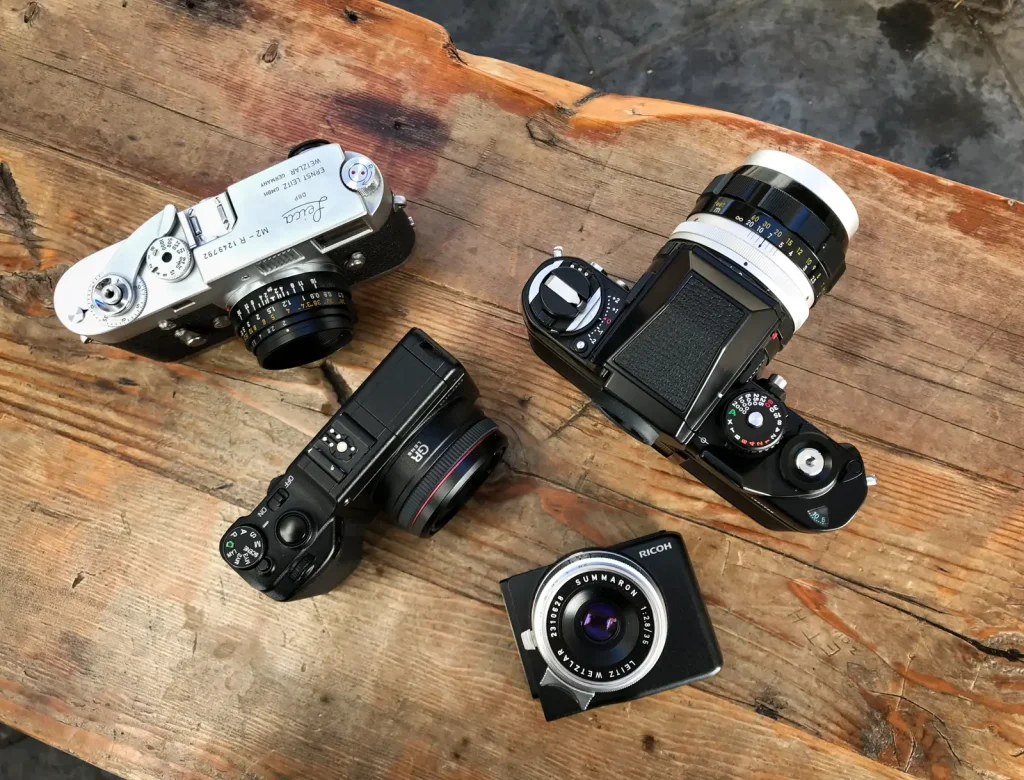
What’s It Like to Shoot?
I’ve owned the Ricoh GXR system for two years, and while it may not be my primary shooter, I’ve used it enough to confidently state what feels right and wrong with it.
Menus: Menus!
The menu system is rather complex, and whether or not this is a bad thing depends on how technical you are. Realizing the full capability of this camera required a few hours of my time, most of which was spent cross-referencing the manual for each menu option and then experimenting.
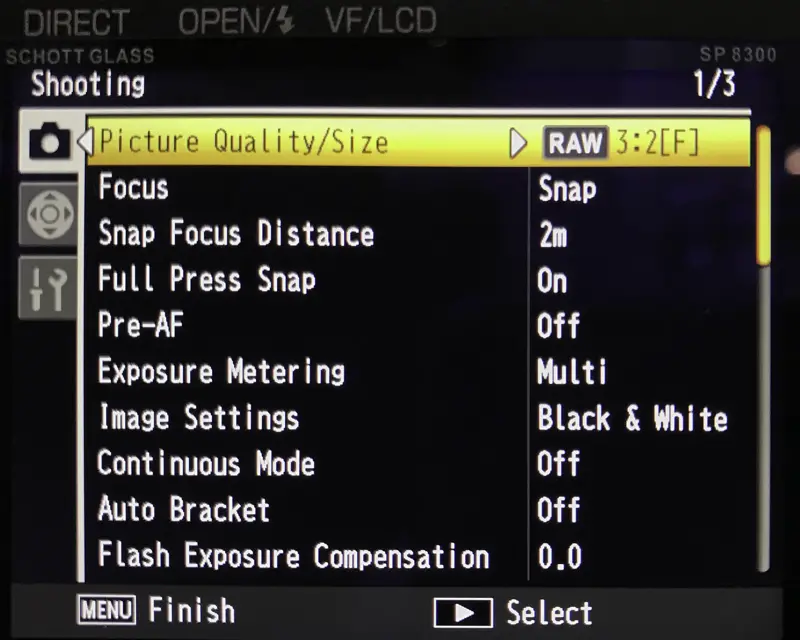
It’s plainly evident to me that the Ricoh GXR is for photographers that enjoy a high degree of customizability. The number of assignable buttons and functions is simply staggering for a body this compact. I will say that the menu does a good job of getting out of the way once it’s been properly setup. That is, one need no longer enter the menu system to change frequently adjusted settings as almost every shooting option can be assigned to a button. Dedicate a little time to the setup, recognize which customization options are most worthwhile, and you will be rewarded with a camera that offers quick and intuitive adjustments.
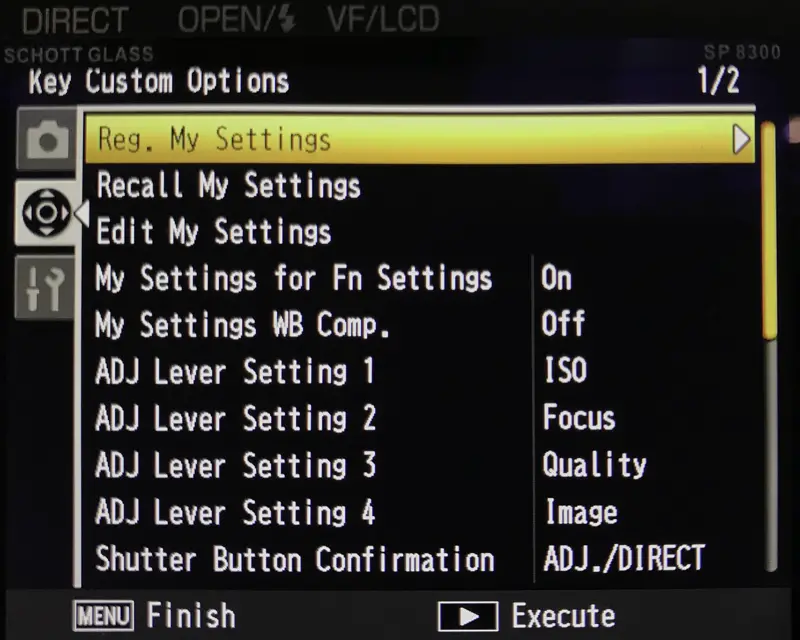
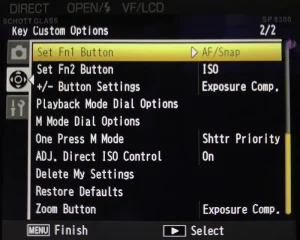
The 28mm f/2.5 GR Module
The 28mm GR module was introduced in late 2010. To say that the point & shoot market has matured in the last 7 years is a bit of an understatement. Manufacturers such as Fujifilm, Sony and even Ricoh are now producing incredibly capable cameras in very small form factors. They’ve also sorted out the biggest issues and drawbacks that kept professionals from using them as serious tools.
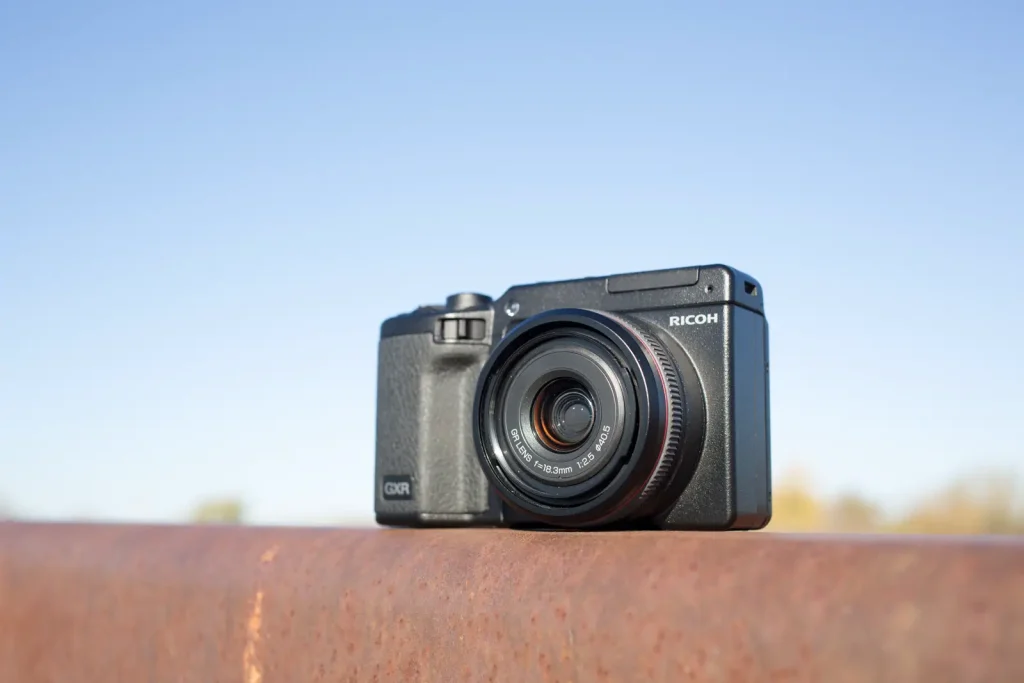
One of the big issues with early digital point and shoots was speed. With the Ricoh GXR, this problem appears in the form of data write speed. When shooting RAW, a 2 to 3 second blackout occurs after every shot. This may or may not drive a person bat-shit crazy. A spray and pray shooter (god help them) will find this to be a nuisance of the highest degree. A slow and methodical photographer will likely fail to notice the shortcoming. I find myself somewhere in between. The blackout doesn’t usually get in the way of my process; however, the camera just can’t manage to match my shooting pace in all scenarios. Thankfully, every other operational speed is perfectly acceptable. Start-up, AF acquisition, menu-navigation, and image playback speeds are all snappy, even by today’s standards.
Snap Focus: It’s a snap
Perhaps the most powerful tool this module offers is Snap Focus. It’s been a long-standing feature in GR cameras and for good reason: it’s one of (if not) the best implementations of manual focus on an autofocusing camera. Snap Focus allows you to set a predetermined focus distance that the camera “snaps” to when required. I’ll go into a bit more detail on the of this feature because I believe it sets the Ricoh GXR (and GR) apart from the other cameras aimed at documentary and street photographers.
There are basically two ways to use snap-focus. The first (and arguably simpler) method is to shoot the camera in the dedicated “snap focus” setting. The user selects a focus distance (1m, 1.5, 2, 2.5, 3, 3.5, 5 or infinity) and the lens will remain focused at that distance. When the shutter is fully pressed an image is taken with no discernable lag. There is also a very convenient button shortcut to change the snap focus distance. Simply hold down on the macro (flower) button and rotate the front dial to scroll through the snap focus distances.
The second method is to shoot the camera in “full press snap” mode. The camera autofocuses as it normally would with a half-press, however, if you quickly depress the shutter all the way (skipping the halfway point), the lens will jump to your snap focus distance and an image will be taken. This results in a bit of lag as the lens moves from its previously autofocused position to the “snap focus” position, and for this reason I prefer the first method.
The Lens: It’s Wide
The module features an 18.3mm (28mm equivalent) lens with a depth of field is so vast that at apertures of f/8 and greater everything is “in focus”. This is incredibly beneficial for those that zone-focus. I’ve tailored my shooting method around this attribute by dialing in a high ISO value (1600 or 3200) and operating the camera in shutter speed priority mode. By selecting a low (but manageable) shutter speed (around 1/30 for a still subject and 1/125 for moving), the aperture will typically remain above f/8 and everything in the frame is more or less “in focus”.
As a 35mm lover, the 28mm focal length feels a little “loose” to me. I find the perspective just a bit too wide and stretched to be used as an “everything” lens. It does, however, force me to see things in a different way and become a bit more intimate with the subject. So in a strange way, this little digital has become my “experimental” camera.
Images: B&W Done Well
Finally, and perhaps most importantly, the 28mm module makes fantastic images. I’m particularly fond of the B&W raw conversions and even the in-camera B&W jpegs. The images can be quite easily manipulated to look like high quality film scans.
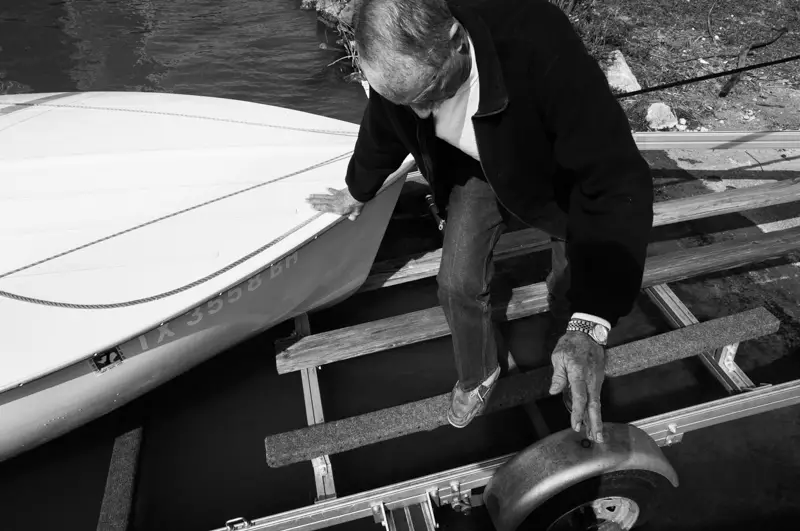

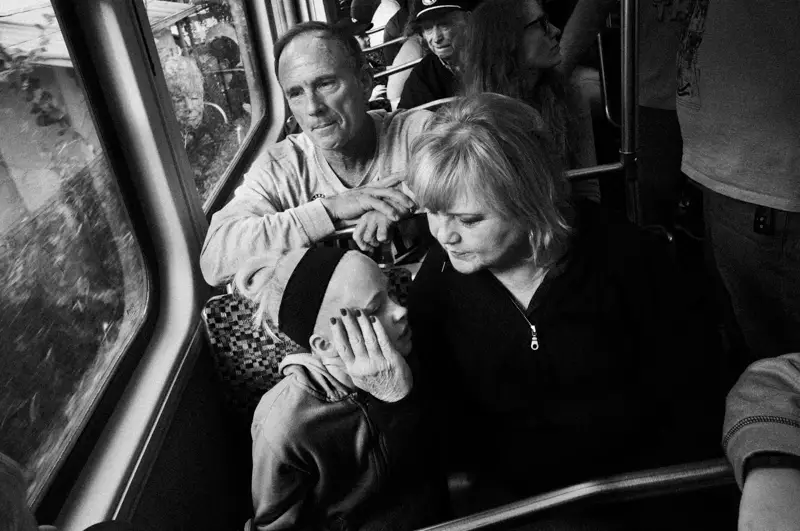
The Leica M Mount Module
The Ricoh GXR M-mount module really showcases the potential of a modular interchangeable sensor camera. It features a 12.3 MP APS-C CMOS sensor with no low-pass (anti-aliasing) filter and a microlens layout tailored specifically to Leica M lenses. The lack of a low-pass filter means sharp images, as one would expect. The mount-specific microlens layout does an impressive job of keeping peripheral color-shading and corner smearing to a minimum when using wide-angle lenses.
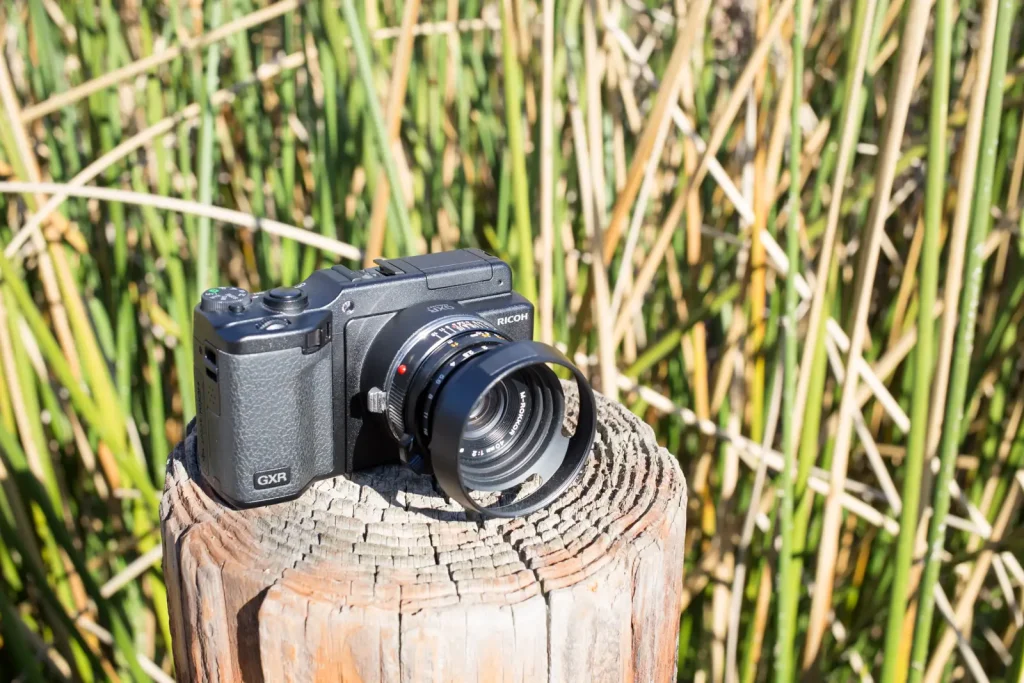
The APS-C sensor means a 1.5x crop factor. A 24mm full-frame lens becomes 35mm, a 50mm lens becomes 75mm and so on. It’s honestly not that big of a deal, unless you have an M-mount lens you absolutely adore on full-frame. It turns my beloved collection of 35mm M-mount lenses into 50mm lenses, a focal length I don’t care for very much. On the other hand, it turns my 50mm lenses into 75mm lenses, a focal length I quite like. So, make of it what you will. I should also mention that any lens that can be adapted to M-mount will work perfectly on this module. This opens the door to an absolutely astounding number of manual focus lenses: Leica TM, Leica R, M42, Nikon F, Canon FD, Olympus OM, Contax/Yashica, Minolta M, Pentax K, etc.
An electronic shutter option is unique to this module and permits silent shooting up to 1/8000 sec. I don’t often find use for this feature; however, it has been surprisingly helpful on more than on occasion. It permitted me to photograph the patrons of a very quiet church without annoying them or disrupting the mood. Not much else to say other than it’s nice to have when you need it.
One very convenient feature that took me only two years to discover is the use of Auto ISO in shutter speed priority mode. One would naturally assume that ‘aperture priority’ and ‘manual’ are the only modes applicable to lenses without coupled apertures. Ricoh did something rather clever and implemented a shutter-speed priority that shifts the ISO (rather than aperture) to obtain the correct exposure. Exposure compensation is also permitted in this mode, allowing a +3 to -3 stop adjustment to the scene. I find this shutter-priority mode to be a huge benefit in my method of picture taking. Rather than worry about selecting an aperture to give me a fast enough shutter speed, I select my shutter speed (and aperture of course) and let the camera sort out the rest. Sometimes technology is a good thing!
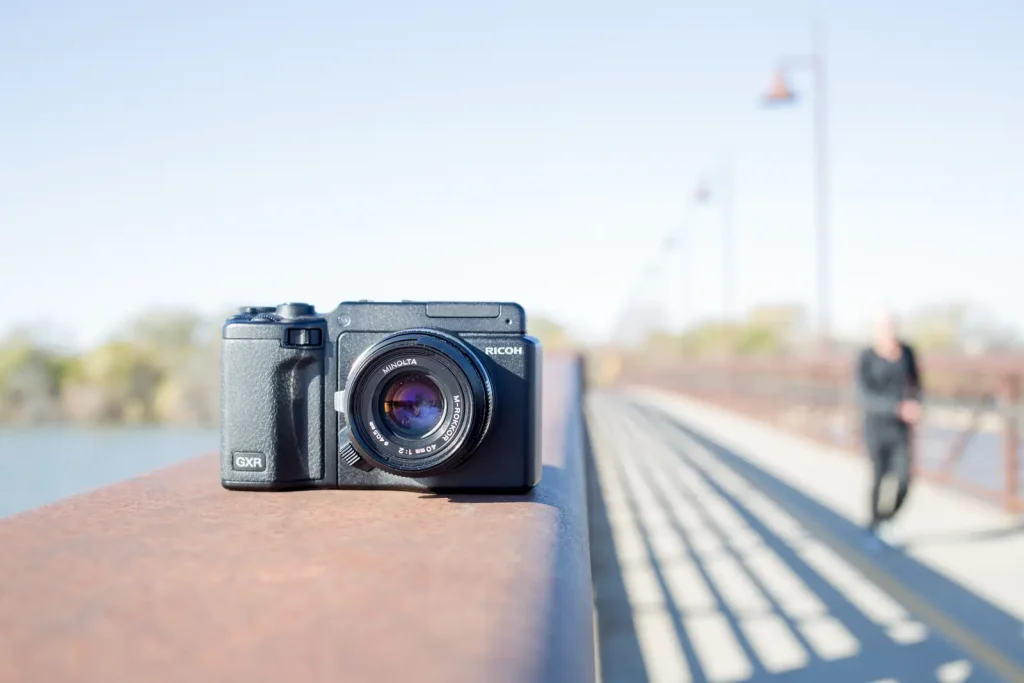
Focusing: Make it Work
One would hope that a camera module designed strictly for use with manual focus lenses would incorporate some proper focusing aids. Fortunately, it does and there are three to choose from: magnified view, focus peaking, and inverted focus peaking. The magnified view does as the name implies and enlarges a portion of the image by 2x, 4x, or 8x for critical focusing. The focus peaking aid overlays shimmering white dots on objects that are in the current focus plane. The inverted focus peaking displays the image in monochrome in an attempt to make the peaking more discernable.
I find it particularly distracting to have dots of any color littering the screen, and for that reason I’ve never been a fan of focus peaking. The Ricoh GXR isn’t very good at it either. Unless the scene is bright and high in contrast, the dots appear rather ambiguously, making identification of the true focus plane difficult. In summary, focus peaking on the GXR is a tedious and inaccurate method of focusing and you’re better off using the magnified view.
So, I’ve set up the Ricoh GXR to make the magnified view focusing as effortless a process as possible. I press the Function 1 button (which my thumb is always resting next to) to magnify the center of the image and focus on the subject. I then half-press the shutter to see the entire frame and decide on a proper composition. If I decide to focus on a different object, I simply release the shutter to re-enter magnified view. Finally, I take the picture and the camera returns automatically to the standard un-magnified view.
Despite being a fairly straightforward method, I do not find this process of picture taking to be a good match to my style of photography. Zooming in to focus (rather than having a small rangefinder patch in the center) does not allow me to concentrate on the moment. It feels as though I’m continuously jumping between two scenes with two entirely different objectives. So, next to a camera like the M9, the M-Mount module feels rather laborious and clumsy in use. To be fair though, shooting a true mechanical rangefinder makes manual focusing any digital feel clumsy. I find it both amusing and ironic that the AF 28mm GR module provides me with a better way to manually focus than the M-mount module.
Images: Weapon of Choice
The images from the M-Mount module are very similar to the ones from the GR module. To be more specific, the quality and flexibility of the files are more or less identical and that makes manipulating the images from either module a more or less identical process. Any discernable image variation between modules comes from the choice of lens. The 28mm GR features a very modern, sharp, and contrasty lens. The M-mount features virtually any type of lens you can get your grubby little hands on. I’m particularly fond of lower contrast Leitz lenses from 60’s and 70’s and would describe their rendering as delicate and classic. This makes achieving the “film” look even easier for me in post.
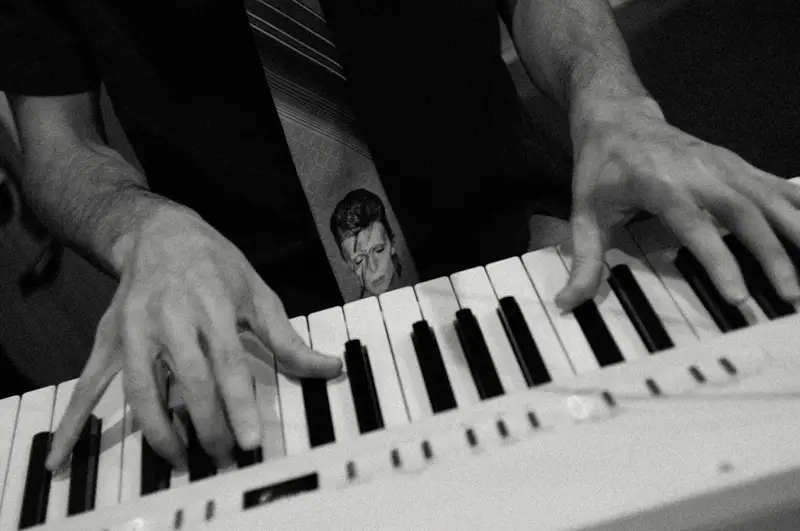
The Ricoh GXR – Final Thoughts
Is the Rioch GXR’s unique modular design a good thing? I’ve been contemplating this since first picking up the camera. Rather than weigh the pros and cons, I’ve come to a conclusion in a much less technical way. I really enjoy using the camera. It produces images that I find particularly pleasing. It’s fun, it’s different, and it really is unique. So, I am inclined to say that it is indeed a good thing.
Why, then, did the Ricoh GXR fail? To answer this question, I think we should define what a product failure really is. In the cut and dry business-sense, if a product doesn’t come close to meeting its sales goal, it’s a failure. In the innovative-sense, if a product does nothing to further the progress of a technology and brings nothing new to the table, it’s a failure.
The Ricoh GXR was undoubtedly a failure in the business-sense. I won’t pretend to know the sales figures, but the scarceness of GXR-related commentary on the entirety of the internet says a lot. I believe the biggest factor in all of this was the reputation digital point and shoots had gained up to the time of its release. Follow me on this. I think it would be fair to say that the Ricoh GXR is in many ways the digital equivalent of a luxury film point and shoot such as the Nikon 35Ti or Contax T3: well-constructed, compact, obscenely priced. The 35Ti and T3 were priced well out of reach for the average consumer, however, point and shoot film cameras were “hot” at the time of their release and many professionals and wealthy amateurs purchased the luxury models. Now, jump forward to 2009, the year the GXR was released. People that were “serious” about cameras and image quality were looking at full-frame DSLRs. The Ricoh GXR was likely dismissed by many as another gimmicky point and shoot in a long line of crappy offerings from the likes of Canon, Nikon, etc.
Was the Ricoh GXR a truly innovative product or have I been taken for a ride by the “cool-factor” that so often accompanies modular designs? That’s a tough question to answer because I do think it’s a cool design. To be completely honest, I was drawn to the camera because of the design. I might argue then, that it’s an innovative camera because it made the modular camera premise work to a degree many would not have expected. As stated in the review, it has a few quirks, however, none of these stem from the camera’s unique modular platform. They are issues that plagued virtually all mirrorless cameras of the era. So hats off to Ricoh for making an incredibly good camera on their first go. As far as failures go, the Ricoh GXR was a damn good one.
Content I have written for 35mmc can be found here
Some more of my work on Instagram – mendocinos_villain
Share this post:
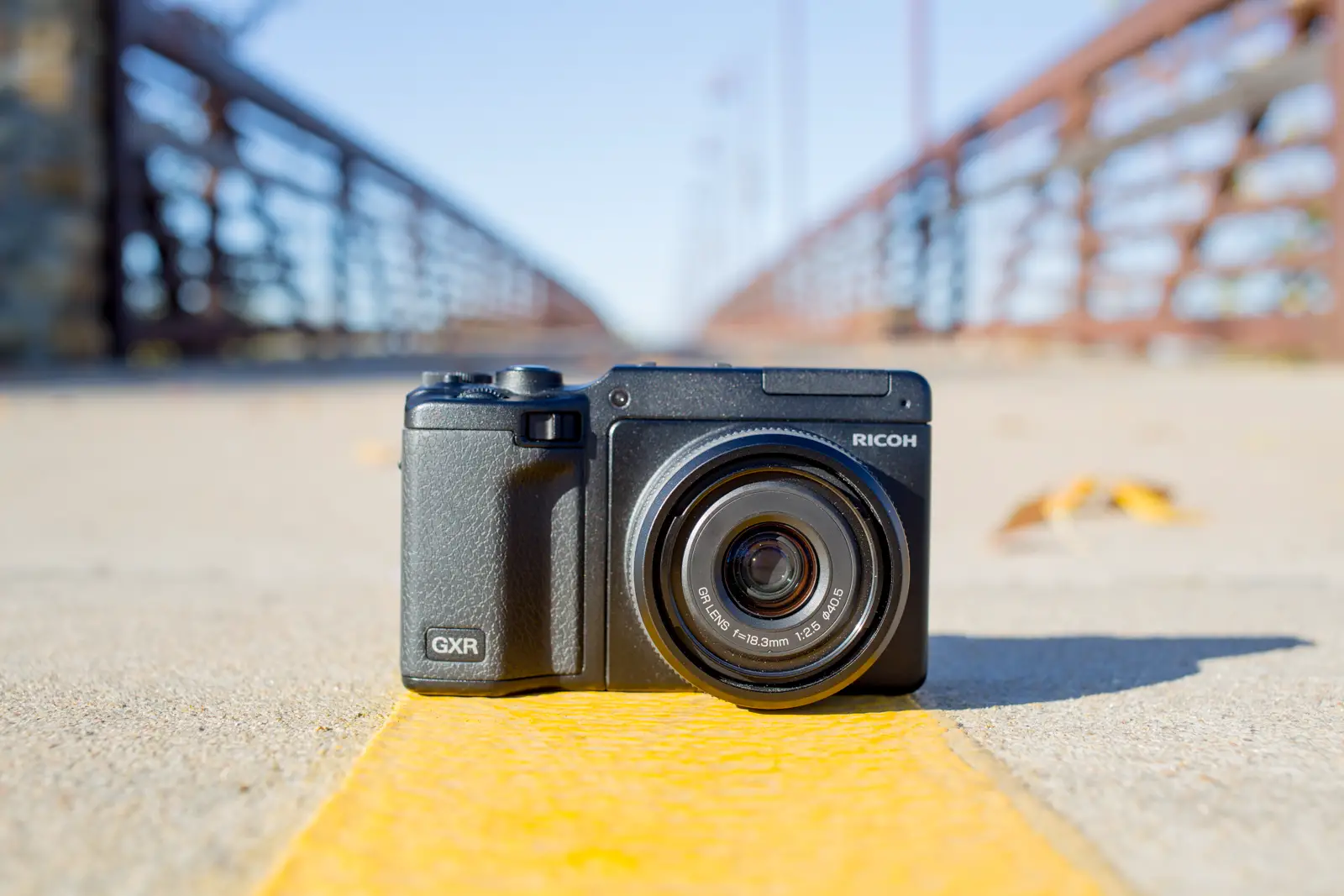








Comments
David McIlroy on Ricoh GXR Review – By Alex Hakimi
Comment posted: 21/01/2018
I'm very pleased with the image quality and handling of the GXR and it's a great adjunct to shooting the same Leica M fit lenses on rangefinders. Lots of GXR image sin my Instagram feed ('ilenticularis').
Tony Cearms on Ricoh GXR Review – By Alex Hakimi
Comment posted: 22/01/2018
Ken Hindle-May on Ricoh GXR Review – By Alex Hakimi
Comment posted: 22/01/2018
The GXR is an interesting concept, but one I'm not entirely sure makes sense from a business standpoint. Sensors aren't especially cheap, so why not just make an APS-C compact with interchangable lenses and save having to buy a new sensor with every lens? I guess they expected most people to only buy a couple of modules. It would be interesting to see what the quality is like in the zooms, too. Fast forward a three years and Fujifilm are making APS-C zooms of remarkable quality, so a zoom GXR could make for a very versatile compact kit. The 24-70mm is remarkably cheap on eBay though, so I suspect they weren't up to that standard.
Comment posted: 22/01/2018
Terry B on Ricoh GXR Review – By Alex Hakimi
Comment posted: 22/01/2018
Fortunately, by the time I read reviews, Sony had announced its first Nex cameras, the 3 and, so I bought into the system which I guessed correctly for once, would be the better long-term bet.
Dan James on Ricoh GXR Review – By Alex Hakimi
Comment posted: 23/01/2018
I discovered the Ricoh digital compacts last year and now have a GX100 and GR Digital III, both of which I love. They're simply the most intuitive and best designed digital cameras I've used. As you say, once you set up the camera initially, you rarely, if ever, need to delve into the menus.
You can also set the features you use most to be accessible via pressing the ADJ button, eg ISO, file size/ aspect ratio, focus, exposure comp etc.
So despite the depth of features available, Ricoh very cleverly created a system where an hour of initial reading, playing and set up will mean the camera becomes as simple as a point and shoot from then after, with access to the major adjustments you need made very direct and simple.
Looking at your screenshots of the GXR the menus look near identical, as does the button layout on the rear. Ricoh obviously found a very effective system, and stuck with it.
I also have a CX1 which I'm selling. A little more traditionally boxy in its shape and slightly fewer features than the GRD III but still a cracking little compact, very capable, and again with the near identical button and menu layout.
I've been very tempted by the GXR, mostly because the GRD III is a fixed 28mm lens, and the GXR has those two very enticing 50mm and 28mm lens/sensor modules. Theoretically for me this could make my Pentax DSLR virtually redundant. And the GXR with 28mm lens could in theory replace the GRD III too.
Also, I didn't realise by using the Leica module you can then adapt other lenses. The option of potentially using my Pentax K Mount and M42 lenses could make my DSLR even more redundant. I need to research this adaptability more, thanks for pointing it out.
Thanks for increasing the temptation further still!
Hamish, these are the kind of guest posts I really enjoy - well written, in depth, informative and useful. More of this kind of quality please! : )
Comment posted: 23/01/2018
Peter Boorman on Ricoh GXR Review – By Alex Hakimi
Comment posted: 25/01/2018
The two fixed focal length lenses, with their APS-C sensors, are very very good, definitely of the quality we've come to expect from the "GR Lens" moniker. The 28mm(equivalent) f2.5 makes the camera into a slightly faster GR, in effect (slightly bigger, and slightly lower resolution). The 50mm(equivalent) turns into something very few digital compacts provide - it reminds me in some ways of a film era fixed lens RF, in the sense of being a small camera with a fixed 'standard' angle of view. the '50' is also a genuine macro lens - by this I don't mean that it goes to 1:1 because it doesn't, it only goes to about half size, but that it retains its very high quality at close distances in ways that the 'macro modes' on most compact cameras really don't. That alone makes a GXR with the '50' lens a very nice tool to have along.
I do wish they'd made a few other fixed lens units. The GXR with a 35mm equivalent would be a truly magnificent street camera. I'd also love a 21mm equivalent, as this is a focal length I learned to love a great deal thanks to my GR21. And a fast portrait length lens would probably make some sense.
The zooms are more of a mixed bag, and maybe for most people not a reason by themselves to buy a GXR - but if you buy one for the fixed lenses and/or for the M-mount module, the zooms can add something useful to make it even more flexible. The 24-85mm(equivalent) is on an APS-C sensor and isn't bad: it doesn't really inspire me, but it makes a neat DSLR alternative for family trips and so forth. The 24-72mm(equivalent) is on a smaller sensor with predictable results - but it is tiny and cheap and I rather like it for B&W work; it basically turns the GXR into a GX200 with slightly better ergonomics and the GX100/200's attractive 'sketchbook' style of drawing in B&W. I've not tried the 28-300(equivalent) which is on an even tinier sensor, but it has a couple of tricks up its sleeve and I'd quite like to have a play with one if I find one going cheap enough.
Given how cheap the 24-72 now is (it was the 'kit lens' option for a lot of GXR users, so is plentiful, in GXR terms at least) I'm wondering about getting another one to see how easily I could convert it to IR.
And then there's the A12 Mount-M. That turns the GXR into one of the smallest and best handling (and cheapest) M-mount options for cropped digital. It's also REALLY good - especially in how remarkably well it handles the short back-focus and resulting acute angles of incidence for peripheral rays that come with rangefinder lenses. I use all sorts of lenses via adapters on my Mount-M and it performs very nicely with all of them. I only wish it was (even) cheaper, because if it was I'd be converting one to IR and maybe looking into a 'Monochrom' conversion on one too.
And that, in fact, is where I think Ricoh missed a trick with the GXR system. The modules that tie a sensor to a lens are interesting, but Ricoh never seemed to make all that it could have of the possible benefits of matching sensor to lens - where was the extreme wideangle or panoramic lens matched to a curved sensor..? What had REAL potential was, surely, the idea of being able to have one camera with multiple sensors. Of course I'd have loved to see a full-frame option, but APS-H might find a market too. What about a 'Monochrom' sensor - that surely would be an attractive option to a lot of people? What about factory made (and warranted) IR conversions? How about a multi-format sensor (a la Panasonic)? A dream option for many would be a pair of sensors (preferably full-frame...) with one a high pixel density sensor giving maximum resolution and performance at low ISOs - a Foveon would be absolutely ideal if Ricoh could sort out the licensing - and a lower res. one that gives really good high ISO performance. Now that would really shake things up!
Comment posted: 25/01/2018
Comment posted: 25/01/2018
Comment posted: 25/01/2018
davie hudson on Ricoh GXR Review – By Alex Hakimi
Comment posted: 21/10/2019
Marty4650 on Ricoh GXR Review – By Alex Hakimi
Comment posted: 14/04/2020
The two most expensive parts of an interchangeable lens camera are the sensor and the lens. Marrying these two parts into one just created more cost. Each time you wanted a new lens you had to buy another sensor. And those lenses could never be used with a newer sensor. The small sensored superzoom module actually cost more than buying a separate superzoom camera, and had zero advantage over it. The most useful module was the Leica M adapter, which is really no different than any adapter you can buy for any mirrorless camera. It is ironic that their best module was a module at all. Just an adapter.
Comment posted: 14/04/2020
Terrence Miele on Ricoh GXR Review – By Alex Hakimi
Comment posted: 20/12/2020
Tom Pitt on Ricoh GXR Review – By Alex Hakimi
Comment posted: 24/04/2022
Jean Perenet on Ricoh GXR Review – By Alex Hakimi
Comment posted: 21/10/2023